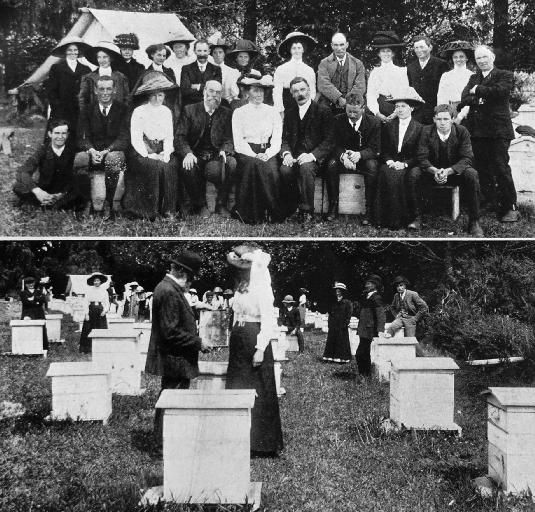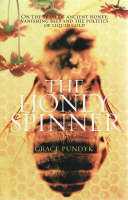165 years ago this January, a ship called the Mary arrived in Lyttelton bringing two hives of honey bees from Nelson.
The history of introduced bees in New Zealand is unusually linked with women named Mary. Back in 1839, a woman called Mary Bumby first brought European bees to New Zealand. Miss Bumby, with her appropriately bee-ish name, was the sister of a missionary, and she was bee-autiful:
"A vision of delight. Soft brown hair, worn in ringlets after the fashion of that time, a complexion that entitled her to the name of the 'Bonny English Rose' and a smile that lighted up gentle hazel eyes, out of which beaned only loving thoughts." 'The Immigrant Bees' Peter Barrett (p77).
How she managed to keep a hive of bees alive on a ship for the seven month journey with only loving thoughts in her head, I can only wonder. Mary Bumby and her bees buzzed into Hokianga harbour in March 1839. Before then, we were not entirely bee-reft of bees - New Zealand has 28 species of native bees, but they weren't great for making commercial honey. And kiwis are sweet on their honey - on average, we eat about 1.5kgs of honey a year - each!
Three years later in 1842, bees arrived the South Island. They were sent over from London by Mrs Mary Anne Allom and sailed into Nelson alive and well. Her reason for sending them over is remarkable:
"My son formed one of the ten cadets who sailed last year for Wellington. After he was gone, I began to reflect upon the many things he would feel at a loss for when he arrived, one among the many, butter; this, I thought might be remedied by substituting honey, when I found there was no bees, at least honeybees, in New Zealand, I accordingly determined that I would send some." p95, The Immigrant Bees.
Some parents send money to their kids on their OE - Mary Ann Allom sent a colony of bees. You only hope her son (Albert James Allom, who was 16 when he left home and his mother in London) appreciated the effort. The Society for the Encouragement of Arts, Adelphi, London certainly did - and awarded her with the silver Isis medal in 1845 for her successful introduction of the bees.
It could well have been descendants of these bees that were sent down to Canterbury by yet another Mary - this time it was the ship Mary, a schooner from Nelson to Lyttelton that arrived on January the 10th 1852 with two bee hives on board. (See the newspaper article in the Lyttelton Times, 17th January 1852 on PapersPast.)
From there, bees have spread through the rest of New Zealand. Māori were the first commercial beekeepers; by the 1860s they were selling large quantities of honey from bee nests in the bush. William Charles Cotton, dubbed the Grand Beekeper in New Zealand, published many books about beekeeping including one entirely in te reo Māori 'Ko Nga Pī' (The bees).
For the buzz on bees:
Comb through our catalogue for books about bees or beekeeping.
Search for local beekeeping clubs on CINCH.

- NZ National Geographic Archive - archive of New Zealand Geographic Magazine with all the articles and images.
- NZGeo TV - contains hundreds of hours of natural history videos much of which is focused on New Zealand's people, places, wildlife and environment.
- Gardening, Landscape and Horticulture Collection - key issues in gardening, landscaping, and other areas of horticulture. Practical aspects as well as the scientific theory.
- GreenFile - a collection of scholarly, governmental and general interest titles which examine the environmental effects of individuals, corporations and local/national governments, and what can be done to minimise these effects.







Add a comment to: Canterbury – a hive of activity for 165 years